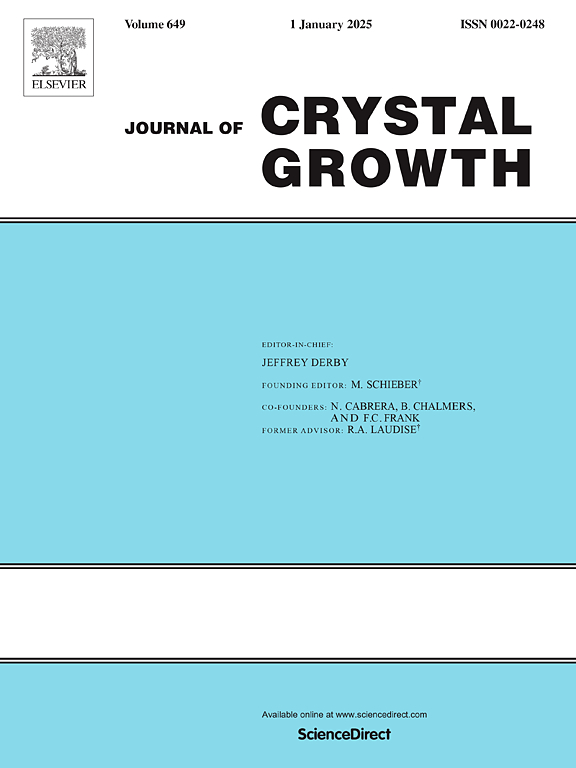采用氨作为还原剂,实现了低成本、无氢化物的CdTe量子点的水相合成
IF 2
4区 材料科学
Q3 CRYSTALLOGRAPHY
引用次数: 0
摘要
CdTe量子点(QDs)是传感、生物成像和免疫荧光分析中的关键纳米材料,开发一种简单、经济、绿色的方法来合成CdTe量子点(QDs)是非常需要的。在本研究中,我们用氨代替普通氢化物还原剂,用镉盐、碲酸钠和3-巯基丙酸(MPA)的水溶液简单回流合成了CdTe量子点。利用吸收光谱、光致发光光谱、x射线衍射(XRD)和透射电子显微镜(TEM)对得到的CdTe量子点进行了表征。通过改变回流时间,可以很容易地控制量子点的吸收窗口和发射颜色在绿-红范围内。随着量子点尺寸的增大,晶体结构由碲化镉转变为碲化镉合金。本文所证明的结果为生产碲化镉量子点提供了一种经济有效的方法。本文章由计算机程序翻译,如有差异,请以英文原文为准。
Cost-effective, hydride-free aqueous synthesis of CdTe quantum dots enabled by using ammonia as the reducing agent
The development of a simple, cost-effective, and green method to synthesize CdTe quantum dots (QDs), which are a key nanomaterial in sensing, bioimaging, and immunofluorescence analysis is highly desirable. In this study, we used ammonia in lieu of common hydride reductant to synthesize CdTe QDs by simple refluxing aqueous solutions of cadmium salt, sodium tellurite, and 3-mercaptopropionic acid (MPA). The obtained CdTe QDs were characterized by absorption and photoluminescent spectroscopies, X-ray diffraction (XRD), and transmission electron microscope (TEM). The absorption window and the emission color of QDs were facile controlled over the green–red range by varying the refluxing time. As the QD size increased the crystal structure transformed from CdTe to a CdTeS alloyed form. The results demonstrated herein suggest a cost-effective method for production of CdTe QDs.
求助全文
通过发布文献求助,成功后即可免费获取论文全文。
去求助
来源期刊

Journal of Crystal Growth
化学-晶体学
CiteScore
3.60
自引率
11.10%
发文量
373
审稿时长
65 days
期刊介绍:
The journal offers a common reference and publication source for workers engaged in research on the experimental and theoretical aspects of crystal growth and its applications, e.g. in devices. Experimental and theoretical contributions are published in the following fields: theory of nucleation and growth, molecular kinetics and transport phenomena, crystallization in viscous media such as polymers and glasses; crystal growth of metals, minerals, semiconductors, superconductors, magnetics, inorganic, organic and biological substances in bulk or as thin films; molecular beam epitaxy, chemical vapor deposition, growth of III-V and II-VI and other semiconductors; characterization of single crystals by physical and chemical methods; apparatus, instrumentation and techniques for crystal growth, and purification methods; multilayer heterostructures and their characterisation with an emphasis on crystal growth and epitaxial aspects of electronic materials. A special feature of the journal is the periodic inclusion of proceedings of symposia and conferences on relevant aspects of crystal growth.
 求助内容:
求助内容: 应助结果提醒方式:
应助结果提醒方式:


